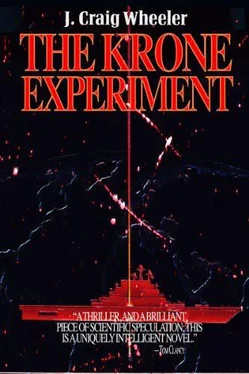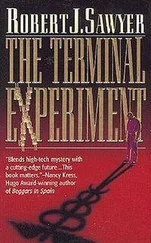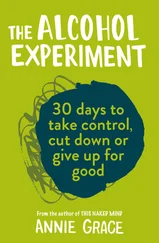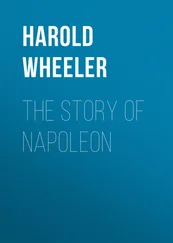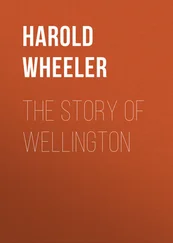Runyan listened in silence.
“Seismic activity along the trajectory,” the Russian continued. “Just statistical. Not a strong signal. But real, I think.”
He took a sheet of note paper from his pocket and slowly and methodically tore it into strips, and the strips into bits. When he finished, he spoke again.
“A definite increase in Earthquake activity. No big quakes, but a larger number of small tremors. A weakening of the Earth. The first small signs.”
Runyan nodded.
“Nervous?” He asked, gesturing at the scraps in the Russian’s gnarled fist.
“Yes,” Korolev smiled, “but no, this is something else. A little trick your Mr. Fermi taught us years ago. The Manhattan Project. If we see nothing, we have a dud. If it works,” he lifted his fistful of confetti, “we have a little hint of how well.”
At a pre-arranged time they put on dark goggles. All was silent on the Bradford. Runyan thought briefly of his wife.
Then a new star was born.
After the initial flash, Runyan whipped off his goggles.
The fireball grew rapidly, expanding along the horizon, blasting upward. Outward it rushed, silently, painfully white, looming, violent, menacing. No, Runyan heard himself telling it, no, that’s big enough. He had to crane his neck to see the top. No. No. It was impossibly big, and still it spread, implacable, ravishing the sky. They were safe at a hundred miles, Runyan thought, they had to be. But in a detached way he could feel a primal force gathering in his belly, forcing a scream toward his throat.
Then it paused, sated, halted its outward rush, and began to billow even taller.
They watched quietly, all diminished by the horrifying splendor. After long minutes, Runyan could make out the shock ripping toward them at unbelievable speed across the surface of the water.
“Hold on,” he heard Korolev mutter.
The Russian grabbed the railing with his free hand. His lips moved as he counted to himself, watching the shock front and tracing its path. Then he threw the shards of paper in the air between himself and Runyan. The shock arrived with the roar of an express train, and the bits of confetti leapt sideways. Korolev watched them continue their wafting fall to the deck.
“It was a big one, Alex,” the Russian growled over the continuous rumble, “a very big one. Pray the recoil was in the right direction.” [1] The text in the last of this epilogue was based on my father’s verbal description of Ivy Mike, the first hydrogen bomb, on which he worked and which he witnessed.
All characters and incidents in this book are purely fictitious and products of the imagination of the author and are not to be construed as real. Any resemblance to actual events or persons, living or dead, is coincidental. Nothing in this book should be interpreted as a representation of views of any department or agency of any government body.
I am grateful for the valuable editorial help of Lucille Enix, Denise Brink, and David Hartwell. Special thanks go to Peter Sutherland and Linda Mills for reading and commenting on an early draft, to Hugo Bezdek for sharing insights into the workings of government agencies, and especially to my wife for her keen critical eye. Finally, I thank anonymous colleagues and their institutions who played host to me over several years, thus providing stolen moments in airplanes, motels, and restaurants, to add a few more paragraphs.
The Krone Experiment was published in original hardcover in November 1986 by Pressworks, Inc., Dallas. The U.S. paperback appeared in November 1988 as an Onyx imprint of the New American Library, New York. A British hardback edition was published in July 1988 by Souvenir Press, London, a Japanese translation in August 1988 by Kobun Sha, Tokyo, and a British paperback edition in June 1989 by Grafton, London. The Krone Experiment is available in print from http://www.thekroneexperiment.com/. Look for the sequel, Krone Ascending , in E-book format. Follow The Krone Experiment series on Facebook.
Here is the cover from the Japanese edition, an orbiting, laser-blasted sheep, that combines several of the technical themes in the book in a stupifyingly inappropriate combination.
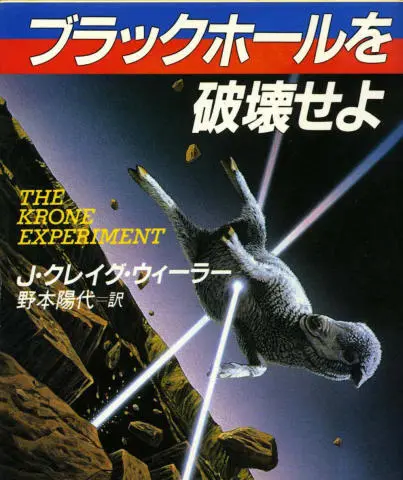
The Krone Experiment was made into an independent film in Austin, Texas. The movie is available on DVD at http://www.thekroneexperiment.com/. The author plays the perpetrator of The Krone experiment, who is mostly brain dead throughout the film. Look for vignettes showing the film’s characters 10 years later, a bridge to Krone Ascending , on YouTube. Follow The Krone Experiment on Facebook.

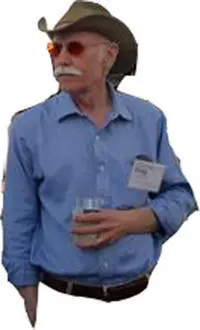
J. Craig Wheeler is the Samuel T. and Fern Yanagisawa Regents Professor of Astronomy at the University of Texas at Austin, where he is a member of the Academy of Distinguished Teachers at the University of Texas and recipient of a Regents Outstanding Teaching Award from the University of Texas System. His research interests are supernovae, black holes, gamma-ray bursts and astrobiology. He has published about 300 papers in refereed journals, numerous conference proceedings, and edited five books. He served on the Space Studies Board of the National Research Council from 2002–2006 and was co-Chair of the NRC Committee on the Origin and Evolution of Life from 2002–2005. He served a two-year term as President of the American Astronomical Society from 2006 to 2008. Follow J. Craig Wheeler on Twitter @ast309.
Other Books by the Author
In addition to The Krone Experiment and its sequel, Krone Ascending , he has plans for a third book in the trilogy. His popular-level book, Cosmic Catastrophes: Supernovae, Gamma-Ray Bursts and Adventures in Hyperspace (Cambridge University Press 2000) won an award in a University of Texas faculty book competition. The second edition, Cosmic Catastrophes: Exploding Stars, Black Holes, and Mapping the Universe (Cambridge University Press 2007), was named one of the top astronomy books of 2007 by CHOICE magazine. This book also appears in a Polish translation, Kozmiczne Katastrofy, and a Hungarian translation, Kozmikus Katasztrófák . See http://ebooks.cambridge.org/ebook.jsf?bid=CBO9780511536625.
Praise for The Krone Experiment
“A thriller, a detective story and a brilliant piece of scientific speculation; this is a uniquely intelligent novel.”
—Tom Clancy, author of
The Hunt for Red October .
“A world expert on black-hole astrophysics, Craig Wheeler gives us here an off-hours gripping adventure story.”
—John Archibald Wheeler, theoretical physicist, author of
Geons, Black Holes, and Quantum Foam: A Life in Physics .
“Exciting… fast-paced… A whopping good story that leaves you on the edge of your seat!”
—
The Austin American-Statesman
Copyright © 1986 by J. Craig Wheeler
Harcover ISBN 0-939722-21-6
Cover design by J. Robinson Wheeler, http://jrwdigitalmedia.com
Читать дальше
